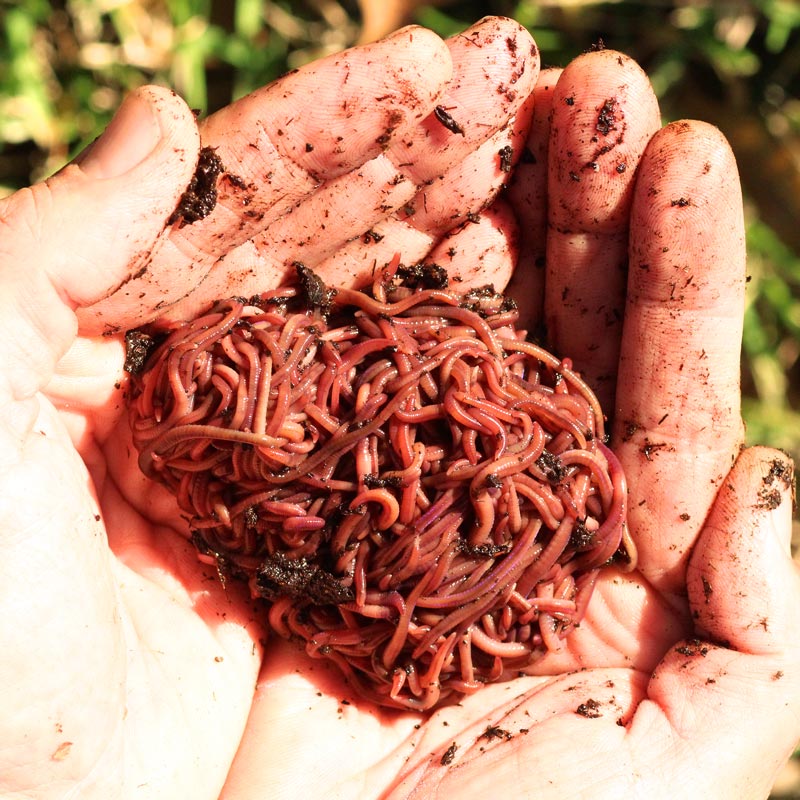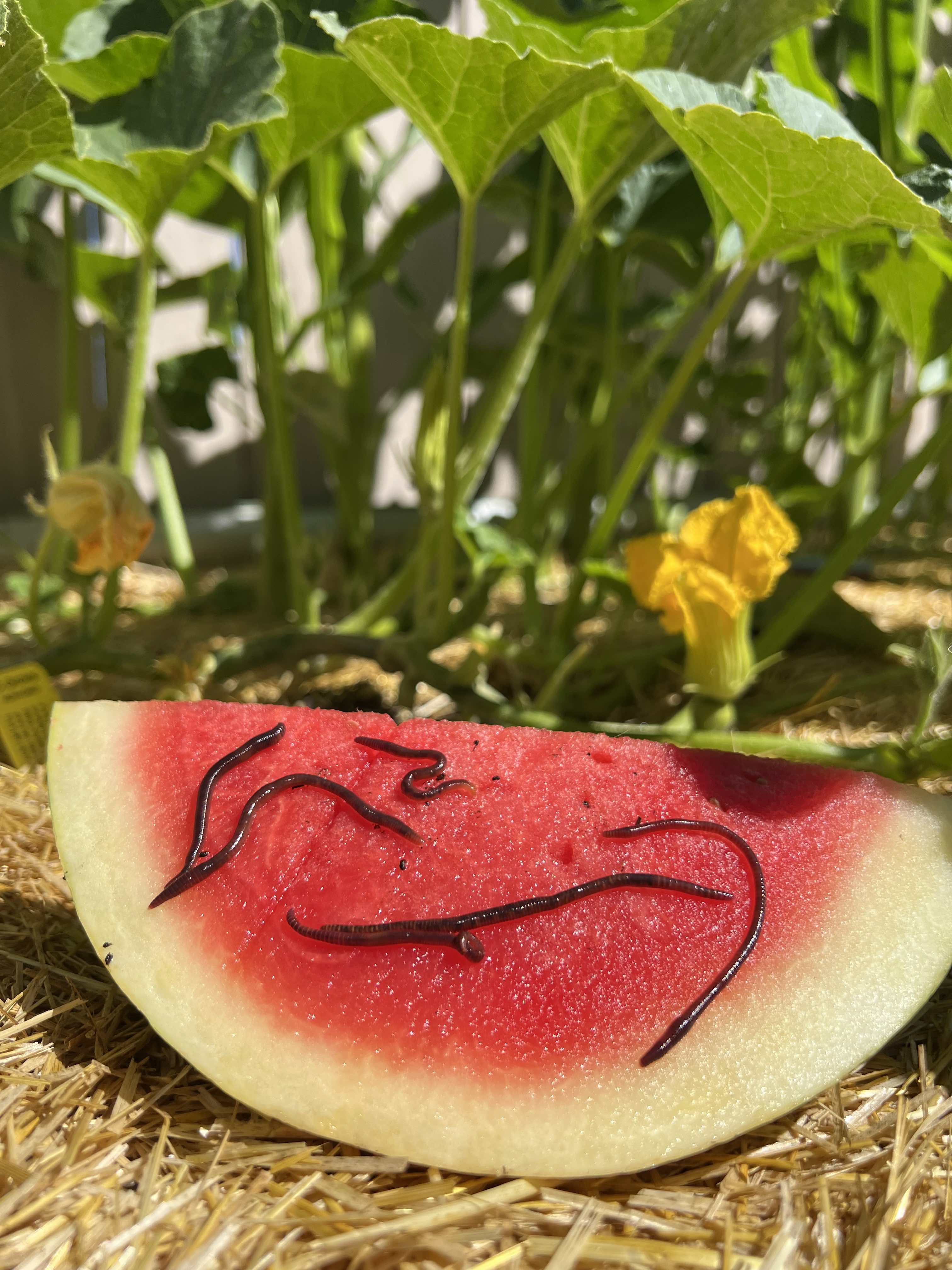Red Wiggler Worms - Reliable Decomposers for Your Garden Compost Bin
Red Wiggler Worms - Reliable Decomposers for Your Garden Compost Bin
Blog Article
Making Best Use Of the Conveniences of Red Wiggler Worms: A Comprehensive Guidebook for Home Gardeners and Urban Farmers
In the world of lasting horticulture techniques, red wiggler worms stand as unsung heroes, quietly changing natural waste right into nutrient-rich spreadings that can function wonders for dirt health. As home garden enthusiasts and metropolitan farmers increasingly look for eco pleasant and economical methods to boost their gardens, the possible benefits of using the power of red wigglers can not be overstated. From minimizing kitchen area waste to growing much healthier plants, the utilization of these humble creatures uses a wide variety of benefits. By discovering the details of how to efficiently look after and maximize the benefits of red wiggler worms, individuals can open a wealth of possibilities for improving the sustainability and productivity of their gardening endeavors.
Understanding Red Wiggler Worms
Red Wiggler worms, renowned for their effective composting capacities, are a varieties of earthworms widely made use of in vermiculture methods. These worms, scientifically referred to as Eisenia fetida, thrive in decaying organic material, making them excellent prospects for composting (Red Wiggler Worms). Red Wigglers are voracious eaters, efficient in consuming their very own weight in natural waste daily. Their digestion process breaks down natural matter into nutrient-rich castings, which are an important resource for enhancing soil and promoting plant development.
One secret attribute of Red Wiggler worms is their reproductive price. These hermaphroditic creatures have both female and male reproductive organs, enabling them to duplicate swiftly under positive problems. A mature Red Wiggler can generate multiple offspring in a short duration, making certain a steady populace within a composting system.

Setting Up a Worm Container
When developing a worm container for vermiculture objectives, correct prep work and interest to detail are crucial for creating a helpful atmosphere for Red Wiggler worms. Begin by picking a suitable container for your worm bin.

Place the worm bin in an amazing, dark area away from direct sunshine and severe temperature levels. On a regular basis check the dampness degrees, adding water if the bed linen feels flaky or completely dry. Feed the worms a well balanced diet plan of fruit and veggie scraps, staying clear of citrus fruits, onions, and spicy foods. By adhering to these actions, you can establish up a flourishing worm bin that will efficiently process natural waste into nutrient-rich vermicompost for your garden.
Feeding and Keeping Worms
Making sure a well balanced and healthy diet regimen is critical for the health and wellness and efficiency of Red Wiggler worms in a vermiculture system. It is important to avoid feeding them citrus fruits, onions, garlic, dairy products, meat, and oily foods as these can be damaging to the worms or create undesirable odors in the bin.
Proper moisture degrees are also essential for the health of Red Wiggler worms. By vigilantly monitoring their diet regimen, dampness, and ecological problems, home gardeners and city farmers can maintain a effective and healthy and balanced Red Wiggler worm population for composting objectives.
Harvesting Worm Castings
To successfully draw out nutrient-rich worm castings from the vermicompost, a systematic harvesting process is necessary for maximizing the composting advantages. Red Wiggler Worms. The initial step in collecting worm spreadings is to encourage the worms to move away of the container. This can websites be accomplished by putting fresh food scraps on one side and leaving the various other side undisturbed for a few days. As soon as most of worms have actually dodged with fresh food, the spreadings can be gathered from the opposite side.
After the spreadings have been gathered, it is necessary to divide any continuing to be worms from the spreadings to stay clear of damaging them during storage or application. One effective technique is to create cone-shaped stacks of spreadings under brilliant light. Worms will intuitively move away from the light, enabling easy separation and elimination.
Finally, the gathered worm castings should be kept in a great, dark, and dry area to preserve their quality and effectiveness as a nutrient-rich soil change. By following these steps, home gardeners and urban farmers can optimize the benefits of red wiggler click for source worms in their vermicomposting systems.
Using Worm Castings in Horticulture
The consolidation of nutrient-rich worm castings right into garden dirt can substantially enhance plant development and overall soil health and wellness. Worm spreadings, additionally referred to as vermicast, are an all-natural plant food generated by red wiggler worms as they break down raw material. These castings are rich in important nutrients like nitrogen, phosphorus, potassium, and useful germs that advertise plant development and enhance soil structure.
When making use of worm spreadings in horticulture, it is necessary to blend them completely into the dirt or use them as a top clothing around plants. The slow-release nature of worm spreadings ensures a constant supply of nutrients to plants in time, minimizing the threat of nutrient leaching and promoting long-lasting soil fertility. Furthermore, worm castings help boost soil oygenation, water retention, and microbial activity, developing a healthy setting for plant origins to grow.

Conclusion
In final thought, the usage of red wiggler worms in home gardening and metropolitan farming can substantially profit dirt health and wellness and plant development. By understanding just how to establish up and maintain a worm container, feed the worms correctly, and harvest their nutrient-rich castings, garden enthusiasts can make the most of the benefits of these earthworms.
In the realm of lasting horticulture methods, red wiggler worms stand as unsung heroes, quietly transforming organic waste into nutrient-rich castings that can work marvels for soil wellness.When establishing a worm bin for vermiculture objectives, correct prep work and interest to detail are crucial for developing a helpful atmosphere for Red Wiggler worms. The very first site step in collecting worm spreadings is to encourage the worms to migrate to one side of the container. Worm castings, also recognized as vermicast, are a natural fertilizer generated by red wiggler worms as they break down organic issue. By understanding just how to set up and preserve a worm container, feed the worms appropriately, and gather their nutrient-rich spreadings, garden enthusiasts can maximize the advantages of these earthworms.
Report this page